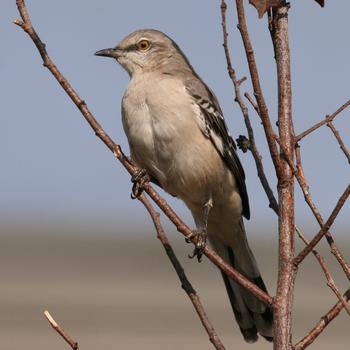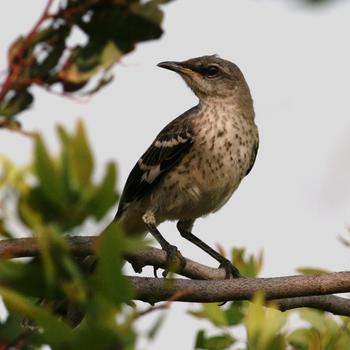Northern Mockingbird (Mimus polyglottos)

Northern Mockingbird, adult - Newport Beach, CA
© Tom Benson

Northern Mockingbird, juvenile - CSU San Bernardino
© Tom Benson
The Northern Mockingbird is a common year-round, breeding resident on campus. They can be seen anywhere on campus. It is a common breeding resident in southern California.
High Count: 10, Average Count: 2-4
The Northern Mockingbird has white underparts, gray upperparts, black wings and tail, and shows large white wing patches and white outer tail feathers in flight. Juveniles are like adults but have a streaking on the breast. Northern Mockingbirds are well-known for their vocal abilities, and are excellent mimics as their genus name suggests. They are also infamous for their tendency to sing at night...the comic strip Get Fuzzy once humorously suggested they be re-named the 'shut-the-#*$%-up-at-3 A.M. bird.'